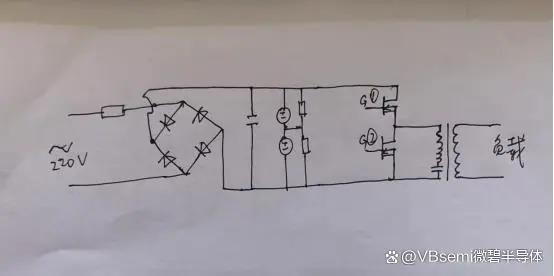Question 1:
Power Supply Circuit Application of MOSFETs

This is a power supply circuit with 220V input, rectification, followed by two MOSFETs for pulse regulation, and then amplified by a transformer.
Question: What are the roles of MOSFETs 1 and 2?
Question 2:
Peripheral Circuit Design of MOSFETs
The full-bridge output topology is commonly used now.
It is often seen that a resistor with high power but low resistance is added in front of the gate of each MOSFET in the bridge arm.
There is also an RCD (resistor + diode + capacitor) circuit connected in parallel with the MOSFETs, which is used to absorb the spike or peak voltage of the MOSFETs.

Question: How to select the RCD device and the resistance for the gate in practice?
Previous Answer:
Answer: It is recommended to use a P-type MOSFET because optocouplers are generally used for signal devices, isolation, and interference suppression. Therefore, using a P-type MOSFET for switch driving is preferable. N-type MOSFETs are suitable for environments with voltages around 5V, and P-type MOSFETs are generally recommended for voltages above 12V. Of course, this is mainly a cost issue. If cost is not a concern, then you can choose either type. When using a P-type MOSFET, connect the MOSFET to the positive pole of the power supply and the device, and then use a small transistor to drive the MOSFET, connecting from the IO port of the chip to the transistor to the MOSFET to the device.
For the application scenario, it is recommended to use a resistor divider scheme, connect the sampling resistor to the D pole of the MOSFET for voltage division processing, and directly provide the divided signal to the CPU. This scheme is simple, reliable, and cost-effective, suitable for most application scenarios.
If you need higher isolation performance, consider using an optocoupler isolator to isolate the D pole signal of the MOSFET and output it to the CPU through the optocoupler isolator. This scheme has good isolation performance, can effectively avoid signal interference and electrical isolation problems, but the cost is relatively high.
Additionally, if further processing of the sampled signal is required, such as amplification, filtering, etc., you can add an operational amplifier circuit or a filtering circuit after the voltage divider resistor. However, this will increase the complexity and cost of the circuit.